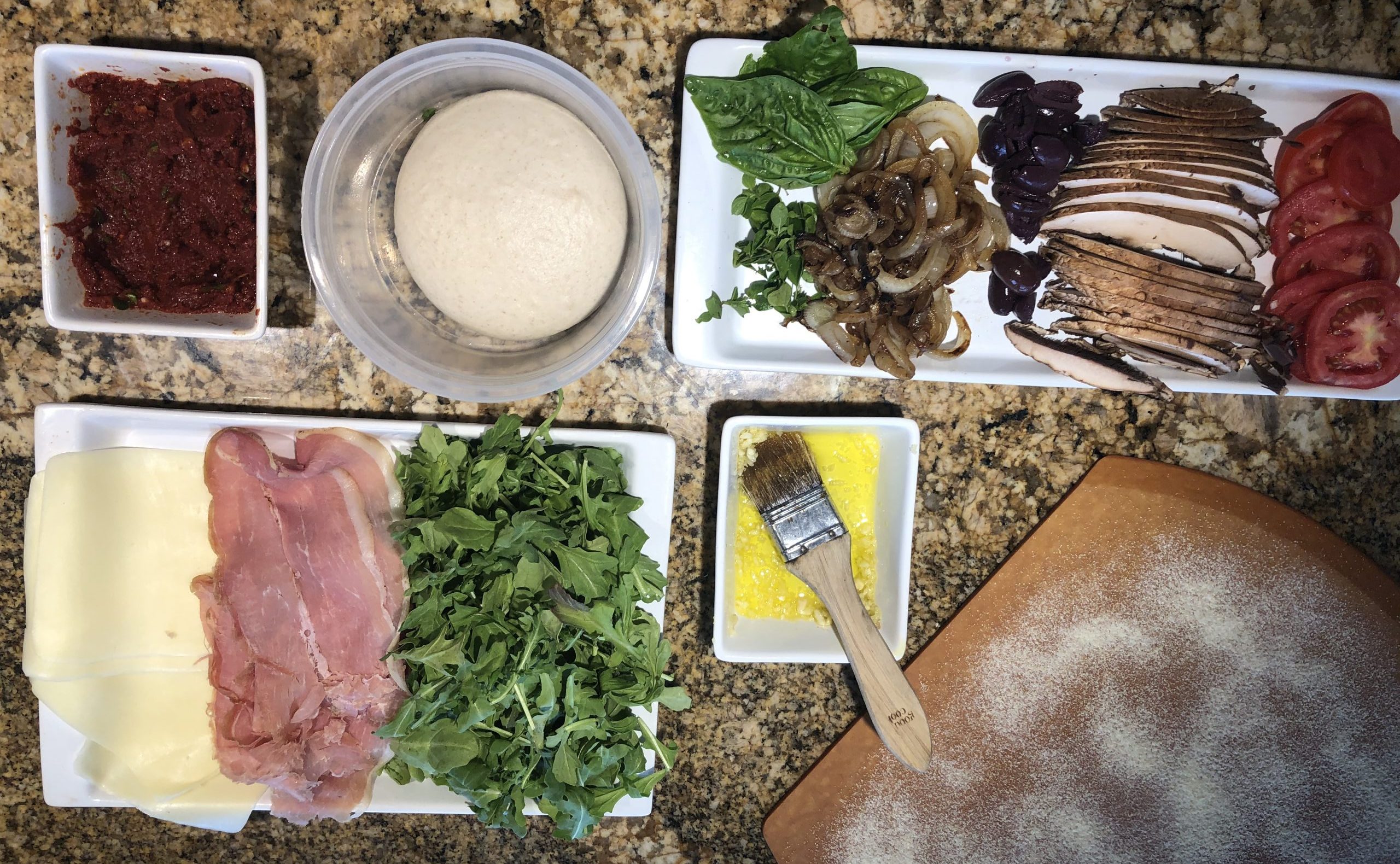0 Comments
share this

Tips:
Use a Steel. (Large rectangular flat metal plate) Instead of purchasing an official pizza steel, I purchased 2 steel plates from a metal shop and seasoned it with oil. If you'd like to make one yourself, comment below and I'll give you instructions.
I learned about the Pizza Steel from the Pizza School. I decided to do a side-by-side comparison using a pizza steel and stone. The pizza steel not only won, it did not crack! Most artisanal pizzas are cooked in 800 degree ovens. Home ovens may go to 550 degrees. In order to create that heat that causes the dough to puff up and create those air pockets as well as to crisp the bottom, having a metal steel helps. The steel is also more versatile because you can place it on the stovetop and use it as a griddle to cook pancakes, Indian naan and chapati, tortillas etc. See the steel plate options in my helpful tools section. Either make your own or purchase a ready-made one.
Pizza Peel: A peel is a pizza sized spatula. It makes getting your pizza in and out of the oven easier. I bought 2 kinds, a solid wood one and one made from a combination of natural materials like the one below. I like the one by Epicurean as it's thinner and smooth. The ones made from natural wood are more difficult to clean, cannot really cut your pizza on it, and the tomato sauce seems to stain the wood. The Epicurean beveled front edge also helps getting the pizza out the oven easier.
Cornmeal: Dusting your peel GENEROUSLY with cornmeal NOT cornstarch creates “rollers” to slide your pizza onto the hot steel, rather than sticking to the peel.
Don't saturate. Dumping too much sauce and toppings makes the dough soggy! Just remember, less is more.
Cheese: Use high quality cheese. Mozzarella cheese gives the gooey, stringy texture. The flavor is somewhat bland and should be baked with the dough. There is definitely a difference in taste between full fat and non-fat cheese. I use regular full fat cheese, low-moisture mozzarella and try to exercise portion control! I sometimes add other tasty cheeses like fontina, cheddar, gouda etc. Avoid using that individually packed fake american cheese (plastic)! After the pizza has been baked, you can add a shaved peccorino, parmesan or romano hard cheese for taste.
Tomato Sauce: Your sauce should not be so wet that it makes your dough soggy. See Easy pizza sauce.
Fresh Oregano. It makes all the difference.
Toppings. Some toppings such as arugula and prosciutto should only be added at the end and not cook during the baking process. Also, vegetables should be thinly sliced, especially mushrooms to ensure that they do not release too much moisture and make your pizza soggy. Fresh basil can be added at the end. I invested a herb cutter scissors that I love! It has 5 blades and cuts your herbs uniformly, especially if used for toppings. I recommend the one in my Helpful Tools section as it is reasonably priced and comes with a cleaner and an herb leaf stripper!
Cooling the pizza: When removing pizza, briefly cool on wire rack before serving. Placing it directly on a plate accumulates moisture from the heat and results in a soggy bottom.
Reheating leftover pizza: For the longest time, I'd reheat leftover pizza in a toaster oven. I learned that simply placing it on a pan on the stovetop with a lid is the best way to reheat pizza. The bottom of the pizza crisps up and by placing a lid on the pan, heat is generated to warm the pizza quickly.




